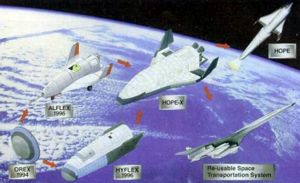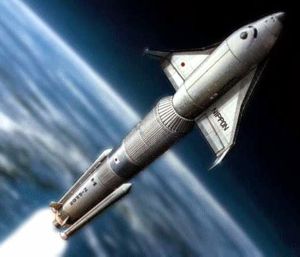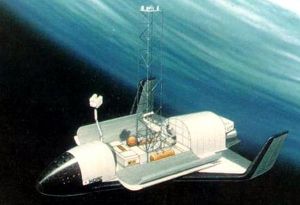
Home - Search - Browse - Alphabetic Index: 0- 1- 2- 3- 4- 5- 6- 7- 8- 9
A- B- C- D- E- F- G- H- I- J- K- L- M- N- O- P- Q- R- S- T- U- V- W- X- Y- Z
HOPE
 Hope Credit: NASDA |
Status: Study 1986. Payload: 2,000 kg (4,400 lb). Gross mass: 13,000 kg (28,000 lb). Unfuelled mass: 12,000 kg (26,000 lb). Height: 16.50 m (54.10 ft). Span: 12.00 m (39.00 ft).
Plans in 1986-87 were for a the final, manned follow-on version in the early 21st century. It would carry a crew of four astronauts. The HOPE development plan included OREX to demonstrate thermal protection and atmospheric re-entry systems; ALFLEX to test the HOPE-X low-speed aerodynamic and landing systems; and HYFLEX to demonstrate hypersonic flight. The end goal was a fully reusable aerospace plane / space transportation system.
A major difference between the European Hermes program and HOPE was that the Japanese favored a phased approach, first building a smaller unmanned version before doing a larger manned mini-shuttle. Thus, the early goal was to design a robotic spaceplane capable of transporting a few metric tons of unmanned cargo and experiments to the International Space Station. Another important mission would be to fly independent missions with microgravity experiments in the spacecraft's small cargo bay. The Japanese regarded a small H-2-launched orbital spaceplane as the logical first step towards ultimately developing a fully reusable 'aerospace plane.'
The Japanese originally planned to develop separate version for initial technology tests and Space Station resupply. However, in 1997 the National Space Development Agency decided that the $830 million Hope-X unmanned experimental spaceplane might be modified for operational resupply flights to ISS, rather than build separate vehicles for testing and operations. The additional cost might be $292 million vs. $2.9 million for the full-scale 22t HOPE follow-on project. Budget constraints later forced a $690 million reduction, to $4.22 billion, in the five-year spending period 1998-2002. In 1998 the Japanese slipped the first Hope-X launch by three years, to 2003. By this time NASDA had spent $305 million since the project was approved ten years earlier.
Article by Marcus Lindroos
| Alflex Japanese spaceplane. Study 2000. Unmanned glider to test technology for Japanese HOPE spaceplane. Wing area 9.45 square meters. |
| Alpex Japanese spaceplane. Study 2000. Kawasaki unmanned glider to test technologies for HOPE spaceplane. Wing area 7.57 square meters. |
| Hyflex Japanese spaceplane. Unmanned testbed for Japanese HOPE spaceplane. |
Family: Spaceplane. Country: Japan. Agency: NASDA.
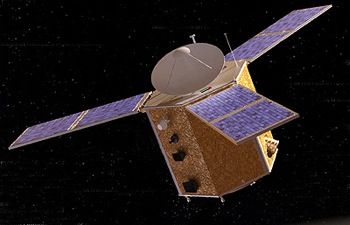 | Al-Amal Credit: Manufacturer Image |
 | NASDA Hope - 1987 NASDA H-2/Hope - 1987. Credit: NASDA via Marcus Lindroos |
 | NASDA Hope-X - 1990s This illustration shows a small pressurized module in the Hope cargo bay, probably a Space Station resupply mission. Credit: NASDA via Marcus Lindroos |
 | NASDA Hope-X - 1996 NASDA Hope-X - 1990S. HOPE-X in 1996. Credit: NASDA via Marcus Lindroos |
 | NASDA Hope-X - 1992 NASDA Hope-X - 1990S. HOPE-X enters orbit. Credit: NASDA via Marcus Lindroos |
 | Hope Spaceplane Credit: NASDA |
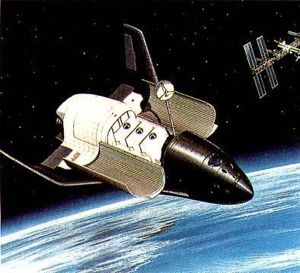 | Hope Spaceplane Credit: NASDA |
Back to top of page
Home - Search - Browse - Alphabetic Index: 0- 1- 2- 3- 4- 5- 6- 7- 8- 9
A- B- C- D- E- F- G- H- I- J- K- L- M- N- O- P- Q- R- S- T- U- V- W- X- Y- Z
© 1997-2019 Mark Wade - Contact
© / Conditions for Use
